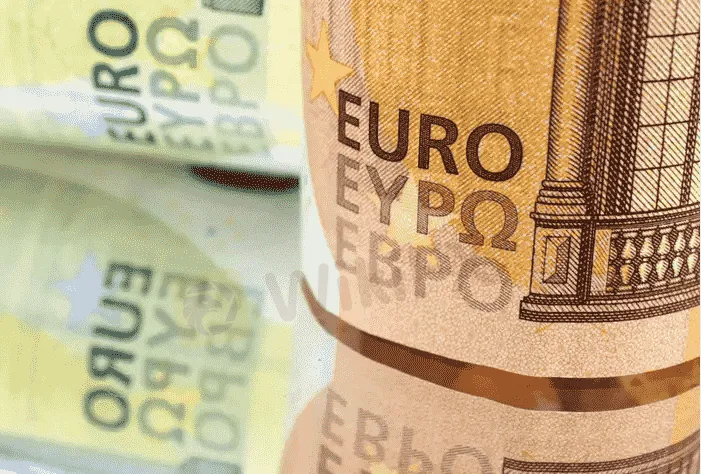简体中文
繁體中文
English
Pусский
日本語
ภาษาไทย
Tiếng Việt
Bahasa Indonesia
Español
हिन्दी
Filippiiniläinen
Français
Deutsch
Português
Türkçe
한국어
العربية
Euro braces for ECB hike, Russian gas restart; yen eyes BOJ
Abstract: The euro hung below a two-week high to the dollar as investors braced for the European Central Bank’s first interest rate increase since 2011 and the scheduled reopening of a key Russian gas pipeline later in the day.

The single currency also faced pressure from the looming collapse of the Italian government.
Meanwhile, the yen edged lower ahead of the Bank of Japans policy decision on Thursday, with the central bank set to stick with ultra-easy settings.
The euro edged up 0.06% to $1.0188, following a 0.39% retreat overnight from an intraday peak of $1.0273, the highest since July 6.
The euro had enjoyed three sessions of strong gains this week on expectations the ECB might deliver a big 50 basis-point rate hike and a Reuters report that a key Russian gas pipeline would reopen on time following a 10-day maintenance shutdown.
The European Union told member states on Wednesday to cut gas usage by 15% until March as an emergency step after President Vladimir Putin warned that Russian supplies sent via the biggest pipeline to Europe could be reduced further and might even stop.
Markets are split on whether ECB policymakers will deliver a previously telegraphed 25 basis-point increase or a half-point rise to try to wrestle down runaway inflation. The monetary authority is also likely to provide more details of a new tool aimed at controlling outsized rises in bond yields on Europes periphery.
National Australia Bank sees the meeting having mixed implications for the euro.
“Italys political uncertainty complicates the ECB plans to deliver details on its new anti-fragmentation tool, especially regarding the conditions for the tool to be triggered,” and a lack of clarity is likely to drag on the euro, NAB currency strategist Rodrigo Catril wrote in a client note.
At the same time, NAB expects a half-point hike and guidance for another half-point increase in September “with the Bank aiming to front-load rate hikes ahead of weaker conditions later in 2022 and into 2023, when room to move may be more limited,” Catril said.
In Japan, the BOJ is widely expected to continue to buck the global monetary tightening trend by keeping stimulus settings steady, as Governor Haruhiko Kuroda has repeatedly telegraphed in the run-up to the meeting.
The dollar rose 0.07% to 138.345 yen, edging back in the direction of the 24-year high at 139.38 seen one week ago.
Sterling continued to consolidate below $1.20 as the field of candidates vying to be Britains next prime minister shrank to two, but a winner is not expected to be announced until Sept. 5.
The Australian dollar was little changed at $0.6889, while the New Zealand dollar slipped 0.16% to $0.6220.

Disclaimer:
The views in this article only represent the author's personal views, and do not constitute investment advice on this platform. This platform does not guarantee the accuracy, completeness and timeliness of the information in the article, and will not be liable for any loss caused by the use of or reliance on the information in the article.
Read more

Unleash Your Trading Skills: Join the WikiFX KOL India Trading Competition!
Are you ready to take your trading expertise to the next level? WikiFX is excited to announce an extraordinary India Trading Competition designed to connect passionate forex traders, enhance user engagement, and reward trading excellence!

WikiEXPO Dubai on-site videos are here!
Let’s experience the excitement through the video!

WikiEXPO Dubai on-site videos are here!
WikiEXPO Dubai on-site videos are here!

WikiEXPO Dubai 2024
Come and experience it with us!
WikiFX Broker
Latest News
Elon Musk Warns of Imminent US Bankruptcy | Bitcoin Retreats from $100K
WikiEXPO Global Expert Interview: Advanced Practices and Insights in Financial Regulation
Justin Sun Invests $30M in Trump-Backed World Liberty Financial
Robinhood Launches Ethereum Staking with 100% Rewards Match
Kraken Closes NFT Marketplace Amid New Product Focus
Philippine Banks Launch PHPX Stablecoin to Transform Payments
Broker Review: Is FOREX.com a solid Broker?
Tether to Discontinue EURt Stablecoin Amid Regulatory Shifts in Europe
Adani’s Bribery Scandal! SEC Charges, Major Fallout & Adani’s Stand
Unleash Your Trading Skills: Join the WikiFX KOL India Trading Competition!
Currency Calculator


